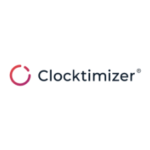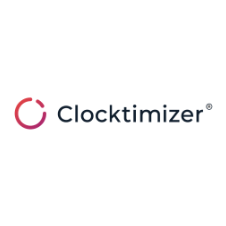Clocktimizer: Webinar wrap up – Developing the foundations of Legal Project Management at scale
For us at Clocktimizer, webinars are a practical way of sharing tips and advice from the firms we work with, to a wider audience. The firms using Clocktimizer often have innovative approaches to LPM and pricing, which combine technology with unique processes and approaches. Last month’s webinar is no exception.
We spoke to Elizabeth Satterfield, Director of LPM & Innovation at Proskauer; and James Barrett, Senior Legal Project Manager at Eversheds Sutherland; about a topic close to our hearts. How can firms lay the foundations for scaling Legal Project Management? For those that couldn’t attend the highly informative session, we have put together a wrap up of the best bits, advice and real life examples shared by our panellists. A recording of the session is available here.
Where does tech add value in scaling?
According to our panelists, LPM at scale is about having more matters managed by fewer people. Crucially, there should already be buy-in from leadership and some clients and the firm should already have some LPM functionality in place. Without this buy-in, and development of LPM processes it is nigh on impossible to scale effectively.
With that said, technology has proved to be highly effective at supporting scaling LPM. Automation of tasks, and speeding up of analysis or oversight of matters is enabling fewer LPMs to have greater impact in their roles. According to Elizabeth there are two key areas where technology can support the LPM team:
Front end support – Lawyers are expected to respond to clients in a timely manner. A system which analyses historical data to develop staffing plans, budgets and comparables quickly enables faster client communication. Secondly, technology can automate aspects of the client intake system, reducing unnecessary admin work.
Back end support – Reporting is essential for management and LPM oversight. Using technology to track matter and service types, activities and a host of other metrics makes it incredibly easy to develop insightful reports on outcomes, scopes and trends.
When do you get LPM involved?
For both of our panelists, one of the visible effects of the pandemic has been the uptick in LPM use. At Proskauer, Elizabeth’s team saw a 20% month-on-month increase in straight project count, irrespective of size. At the client side, this has translated into a 300% increase in client facing activity. Clear evidence of the growing value of LPM teams in long term client retention. But when should you get LPM teams involved in matters?
In an ideal world, James and his team get involved as early as the pitching stage. It allows the LPMs to plot out how to progress the matter in order to deliver it as promised to the client. Additionally, matters with a budget are proactively monitored and LPMs get involved where the profitability of the matter is at risk or a budget is exceeded. For James, it is essential to avoid becoming a ‘gatekeeper’ of LPM services. His team has developed an e-guide to LPM, which walks lawyers through different ways of working and offers templates and helpful advice.
Elizabeth noted how effective automated reporting has been in many cases. Wherever a budget is set, LPMs at Proskauer work with the leading partner to set thresholds and phases for budgets and then generate regular reports on them. This puts control at the fingertips of the lawyers themselves and proactively keeps matters on track.
Integrate LPM advocacy early
Half of the battle for LPM adoption is in knowing it even exists. Most LPM teams currently share at practice group and department meetings. It’s a simple and effective way to get your name out there. For our panellists, there are a number of other key ways to spread the good word of LPM.
James and his team focus on ‘war stories’ – where matters have gone wrong because they lacked LPM support. This gives partners an opportunity to share their learnings and educate the ways in which James’ team can ensure this doesn’t happen again.
Elizabeth highlighted the importance of getting LPM advocacy in early. Her team has collaborated with the programmes Proskauer already offers to incoming attorneys. Her team now introduces LPM as part of the new associate training programme, at the mid-level retreats and for incoming partners. At each level they tailor the programme to the needs and challenges of the seniority level. Importantly, because she collaborates with existing programmes (rather than developing her own) the workload associated with creating such a programme from scratch doesn’t apply.
Measure your success
For too many, the positive impact of LPM isn’t measured. Both of our panelists highlighted the importance of tracking and analysing matters for effective LPM reporting. At Proskauer, Elizabeth has moved away from the traditional approach of tracking hours. Instead she tracks LPM engagements on two different types of metrics:
Substantive data – what type of work is it? RfP? Process Improvement?
Sizing data – Is it lighter ad hoc work? Or was it a heavy lift – engagement level, or an embedded arrangement?
This data can then be sliced and diced by practice area, client or even Project Manager. They can then visualise this to identify trends, and make predictions about capacity.
James’s team track engagement and try to identify which of their tech solutions are being used cross business. This helps identify the most effective types of interventions, and how that plays out across the firm. Heat maps help visualise this, and identify underserved practice groups and clients.
Create layers of collaboration
The final advice from our panelists was a lesson in the flexibility of LPM. There is no one-size-fits-all LPM solution. Some attorneys will be happy with self service support, or automated reporting. Some will require a more managed approach with LPM oversight to keep the matter on track. Some clients have even created their own LPM teams, who want direct connection with LPM on the firm side. The key is to create layers of collaboration.
Begin by identifying the automatable interventions. For Proskauer this is budget reporting, which is managed and automated by tech tools. For Eversheds, this is the e-guide platform developed by James and his team.
As trust is built, more complex layers of collaboration can be developed. This can include light touch LPM, with simple budget oversight and management; to more complex work supporting scope development and timeline planning. Additionally, creating client reporting interventions (where the team analyses and reports on the progression of a matter once completed for clients) can lead to longer term collaborations. Elizabeth and James reflect this in the different layers of scale within the LPM team. They has everything from LPM assistants to Coordinators and Managers. In doing so they offer a career trajectory within their teams and keep talent on board.



